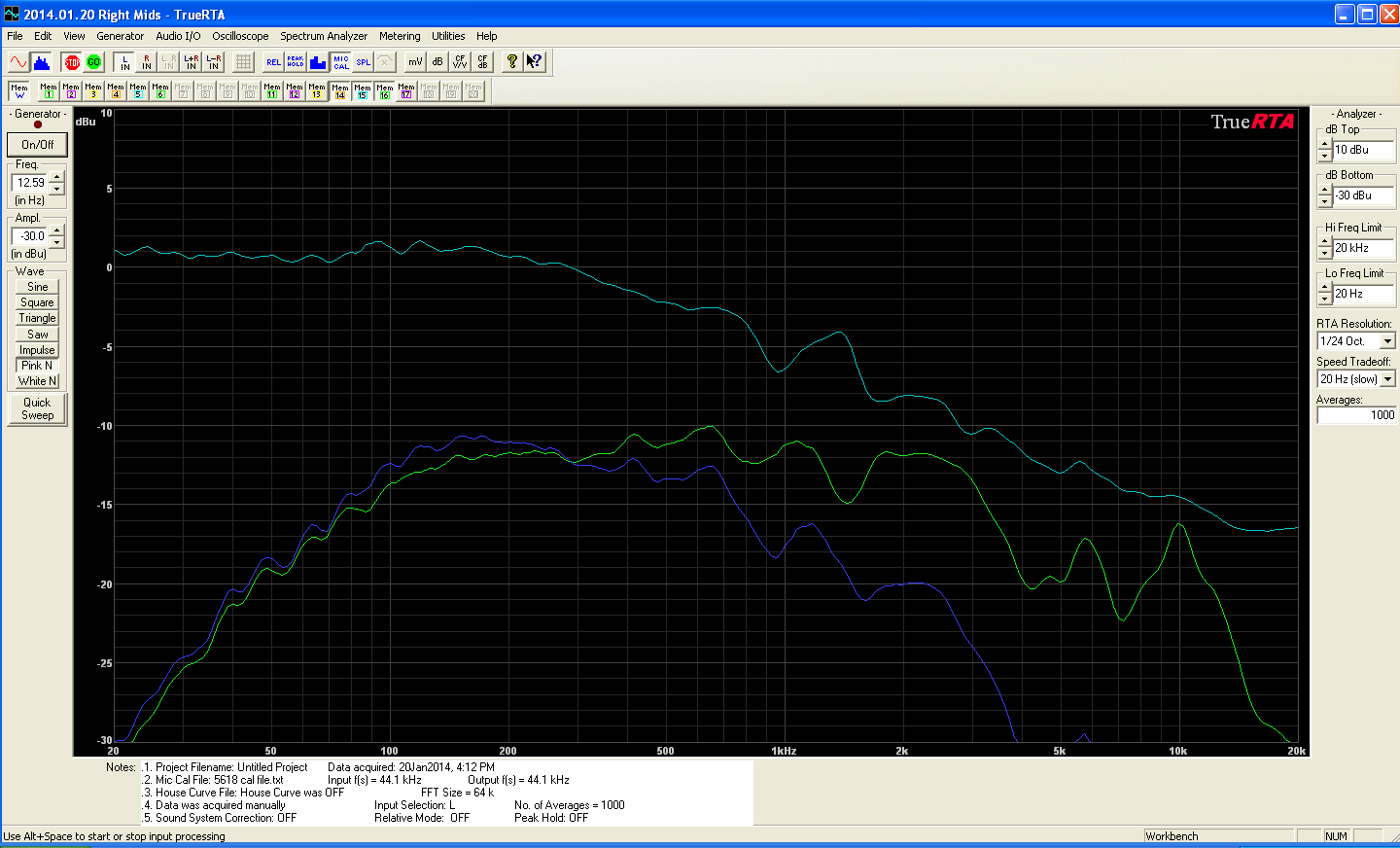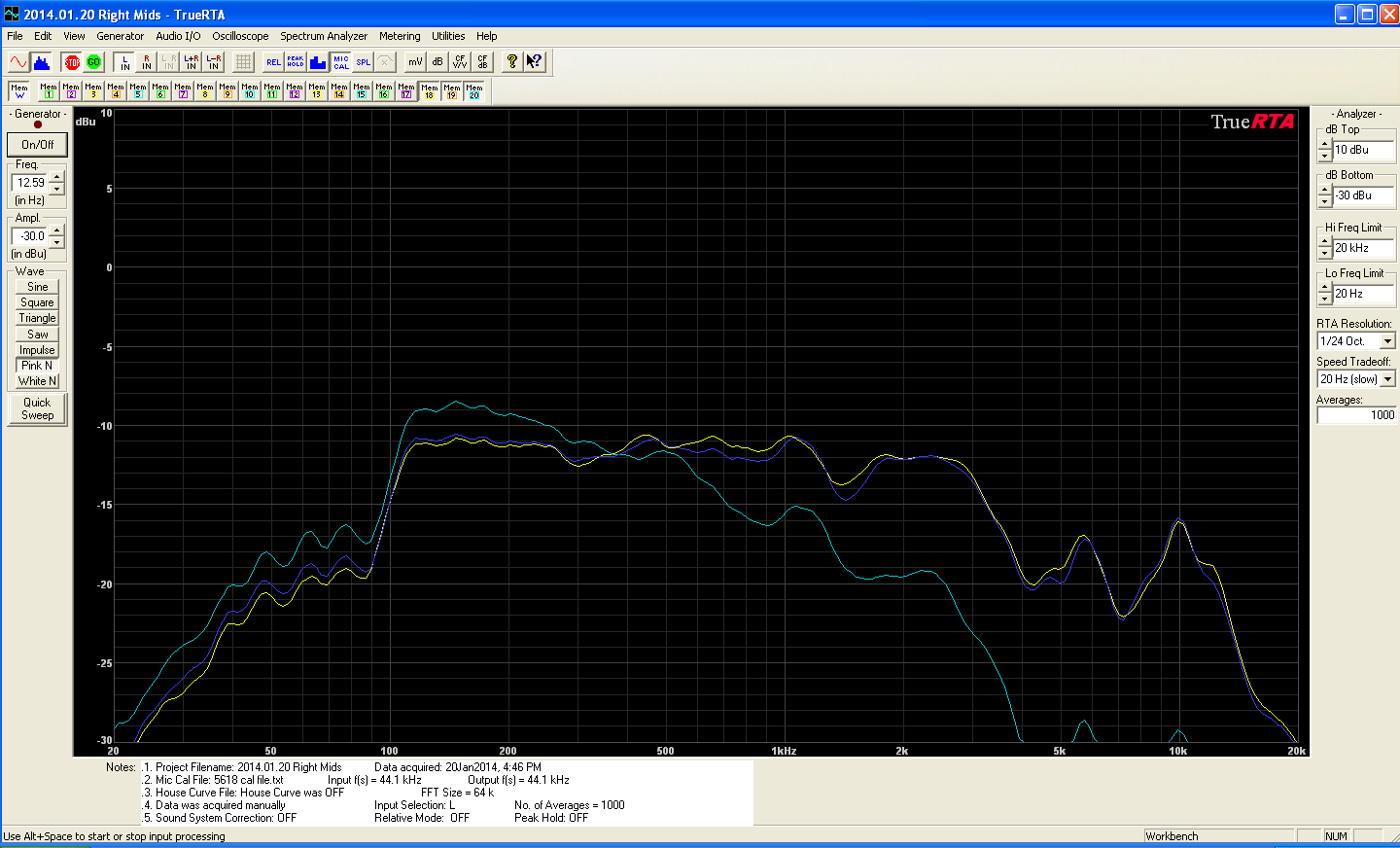Multiple close mic measurements on the mid-ranges have showed the same phenomenon over and over again: the lower mid-range has greater low-frequency output than the upper mid-range. About 2 dB more output, which is significant! I would expect less output from the lower mid-range given that it has a 2 mH inductor with a significant DC resistance.
The first test is comparing each mid-range’s TS parameters. The results are the upper mid-range efficiency is +1 dB over the lower mid-range! A close mic of the two mid-ranges with the 2.0 mH inductor removed show they are within 0.5 dB of each other. Hmmm. Retest with the 2.0 mH inductor on the lower mid-range and voila! The inductor is causing the increase in output. How? My speculation is it increases the mid-range’s Q, which would increase low-frequency output.
 This result is shown above. The lower mid-range frequency response is flat up to the limit of close mic testing. With the 2.0 mH inductor in series with the lower mid-range (blue line) the appropriate roll-off occurs and a +1 dB gain at low frequencies. (The upper curve is the difference between the two curves with and without the 2.0 mH inductor.) The data is from close mic with 1/6 octave smoothing applied. The drivers were outside of an enclosure mounted on Prototype #4’s baffle. Below is the same plot with the baffle mounted on Prototype #4’s enclosure. Note that now the gain at low-frequencies is +2.0 dB – mystery solved !!!
This result is shown above. The lower mid-range frequency response is flat up to the limit of close mic testing. With the 2.0 mH inductor in series with the lower mid-range (blue line) the appropriate roll-off occurs and a +1 dB gain at low frequencies. (The upper curve is the difference between the two curves with and without the 2.0 mH inductor.) The data is from close mic with 1/6 octave smoothing applied. The drivers were outside of an enclosure mounted on Prototype #4’s baffle. Below is the same plot with the baffle mounted on Prototype #4’s enclosure. Note that now the gain at low-frequencies is +2.0 dB – mystery solved !!!
